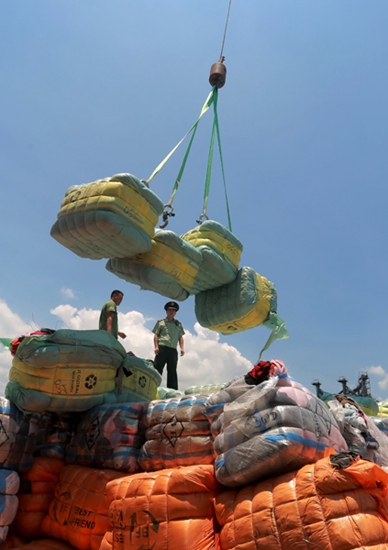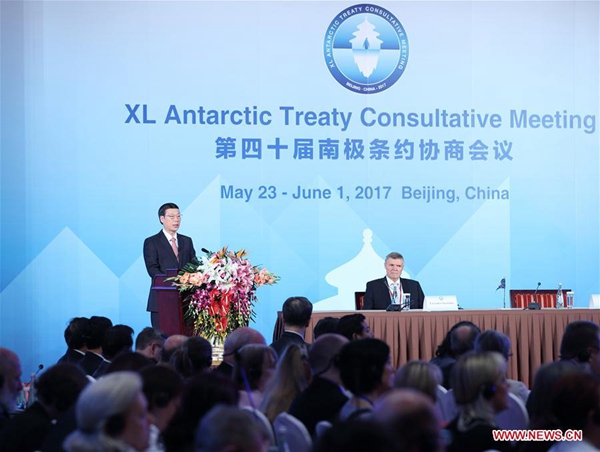Longquan celadon brings spirit of Silk Road to life
|
An emcee displays pieces of Longquan celadon at a press conference held in Beijing on May 23. [Photo by Li Kang/China.org.cn] |
Under the theme of “Chinese celadon rekindles world attention” a press conference on the celadon items used at the Belt and Road Forum for International Cooperation earlier in the month was held in Beijing on May 23, attracting more than 100 attendees.
The organizing committee of the China Green Industry Exposition took the opportunity to sign an agreement with Quzhou Kiln Research Institute on the selection of Longquan celadon as exhibits for a fine artworks hall.
Another agreement was signed between Green China Internet TV (GCITV) center and Longquan Banxian Hall Cultural Development Corporation to designate it as the online trading platform for celadon.
|
Emcees display pieces of Longquan celadon at a press conference held in Beijing on May 23. [Photo by Li Kang/China.org.cn] |
Longquan celadon is a kind of green-glazed Chinese ceramic produced in kilns largely located in Lishui City in Zhejiang Province in the southeast of China. The firing techniques of Longquan celadon joined the UNESCO list of intangible cultural heritage in 2009.
Longquan celadon has a history spanning more than 1,000 years, being shipped to the outside world through the ancient overland and maritime “silk roads.” The ceramics epitomize Chinese culture and bring the spirit of the ancient Silk Road to modern life.
Longquan celadon was used as designated wares at the APEC summit in 2014, the G20 Hangzhou summit in 2016 and the Belt and Road Forum in 2017, becoming a “living fossil” for multicultural exchanges along the Belt and Road.
|
An emcee displays pieces of Longquan celadon at a press conference held in Beijing on May 23. [Photo by Li Kang/China.org.cn] |
Tang Wei, the founder of Quzhou Kiln Research Institute, said the craftsmen in Banxian Hall made topnotch porcelain utensils in the spirit of craftsmanship to ensure Longquan celadon was well qualified as wares to be used at the Belt and Road Forum.
“Longquan celadon is a product embodying the wisdom of Chinese people,” said Zhang Shouzhi, a professor of the Academy of Arts & Design of Tsinghua University.
The conference also exhibited a host of original celadon pieces to demonstrate the concept of the Belt and Road Initiative through unique charm of traditional Chinese culture.
|
An emcee displays pieces of Longquan celadon at a press conference held in Beijing on May 23. [Photo by Li Kang/China.org.cn] |

